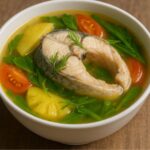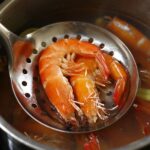Boiled chicken seems like a simple dish, but not everyone knows the right way to cook it perfectly, with evenly cooked meat, a golden-brown skin, and tender, sweet flesh.

1. Mistakes to Avoid When Boiling Chicken
Usually, many people have the habit of putting the chicken in the pot and pouring in cold water directly and boiling it. However, this method can easily lead to the following issues:
-
Fishy odor due to the inability to eliminate the natural smell of free-range chicken.
-
Dull, discolored, or flaky skin due to sudden temperature changes.
-
Unevenly cooked meat, with reddish parts or dryness in the breast area.
2. The Secret: Add a Handful of Lemongrass Leaves
According to folk wisdom and experienced chefs, adding a handful of fresh lemongrass leaves to the pot of boiling chicken is an extremely effective trick. It’s no coincidence that boiled chicken is often served with lemongrass leaves—the essential oils in the leaves not only enhance the flavor but also help eliminate fishy odors.

Benefits of Lemongrass Leaves When Boiling Chicken:
-
Effective odor removal, especially for free-range or freshly slaughtered chicken.
-
Natural fragrance enhancement, making the dish more appealing.
-
Golden-brown skin with a glossy appearance due to natural essential oils.
-
Preserves the sweetness of the meat without losing nutrients.
3. How to Boil Chicken to Perfection: Golden-Brown and Evenly Cooked
Ingredients:
-
1 free-range chicken, cleaned (1.5 – 2 kg)
-
1 handful of fresh lemongrass leaves (can be combined with lemongrass or ginger if desired)
-
1 teaspoon of salt
-
A small piece of fresh turmeric (if you want a deeper yellow color)
-
Clean water (boiled and cooled water is best)
Instructions:
Step 1: Prepare the Chicken
-
Clean the chicken with salt and ginger to eliminate any odors.
-
Rinse with water and pat dry.
-
You can apply a layer of finely grated fresh turmeric to the skin for a natural yellow color.
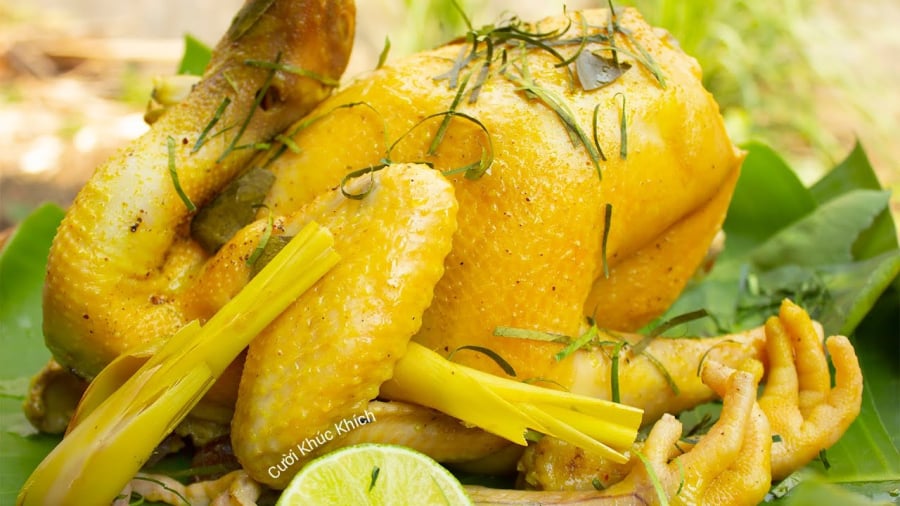
Step 2: Prepare the Boiling Water
-
Use warm or boiled and cooled water in the pot, never cold water from the tap.
-
Add 1 teaspoon of salt, the handful of lightly crushed lemongrass leaves, and some sliced ginger if desired.
-
Place the chicken in the pot, ensuring it is fully submerged.
Step 3: Boil the Chicken
-
Simmer over low heat; do not boil vigorously, as this will cause the skin to crack and the meat to cook unevenly.
-
Once the water starts to simmer gently, reduce the heat to the lowest setting and cook for about 30-35 minutes, depending on the size of the chicken.
-
During the boiling process, use a spoon to ladle hot water over the chicken to keep the skin moist and ensure even browning.
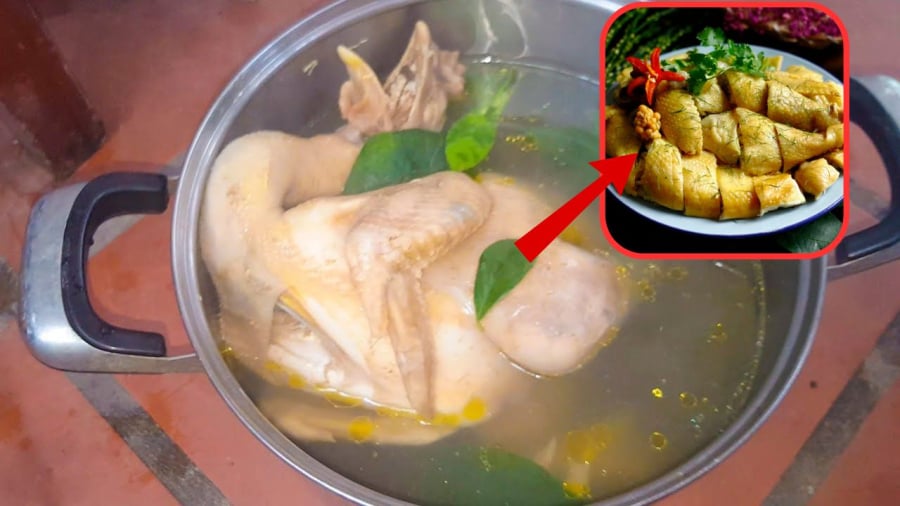
Step 4: Remove the Chicken and Cool It Down
-
Once the chicken is cooked, remove it from the pot and plunge it into a bowl of iced water for about 5 minutes, then let it air dry.
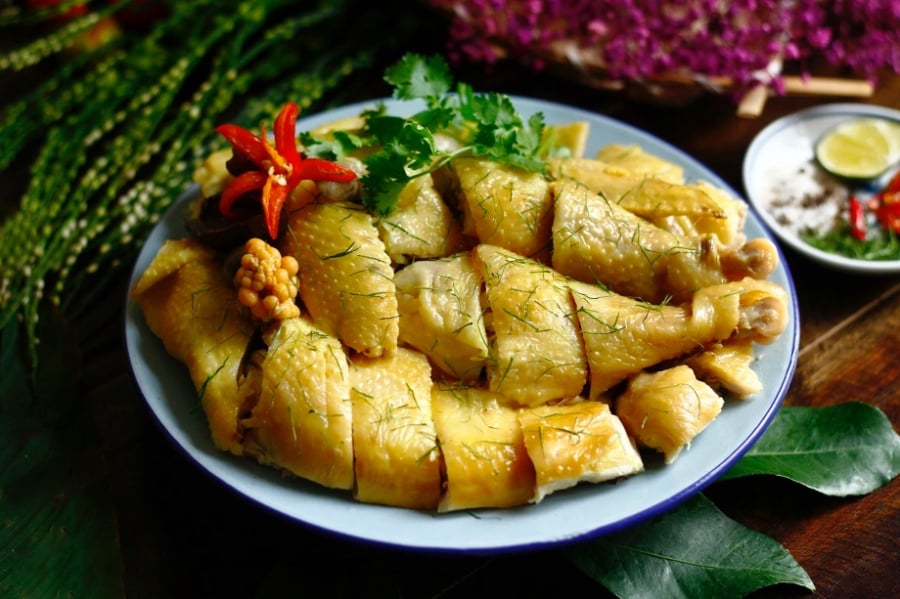
4. Tips for a More Appealing Dish
-
After the chicken is dry, you can brush a little chicken fat or diluted annatto oil on the skin to make it glossier and more golden.
-
When cutting, use a sharp knife and cut decisively to avoid tearing the meat.
-
Boiled chicken tastes best when served with salted chili lime dip, shredded lemongrass leaves, and red or white sticky rice.
Boiling chicken is not just about throwing it into a pot of cold water; it requires a few simple tricks to perfect the dish. Just a handful of lemongrass leaves can make a noticeable difference: golden-brown, fragrant, evenly cooked, and tender meat with a natural sweetness. This simple folk trick elevates the humble boiled chicken to a whole new level in traditional meals.
The Ultimate Guide to Tender Meat: The Secret to Using “Sky-Suspended” Water for the Perfect Dish
For those who are accustomed to the traditional way of braising meat, it’s time to elevate your culinary game with a special twist – braising meat in coconut water, a liquid likened to “heavenly nectar”. With its naturally sweet and refreshing taste, coconut water adds a unique dimension to your dish, eliminating the need for elaborate spices.




























